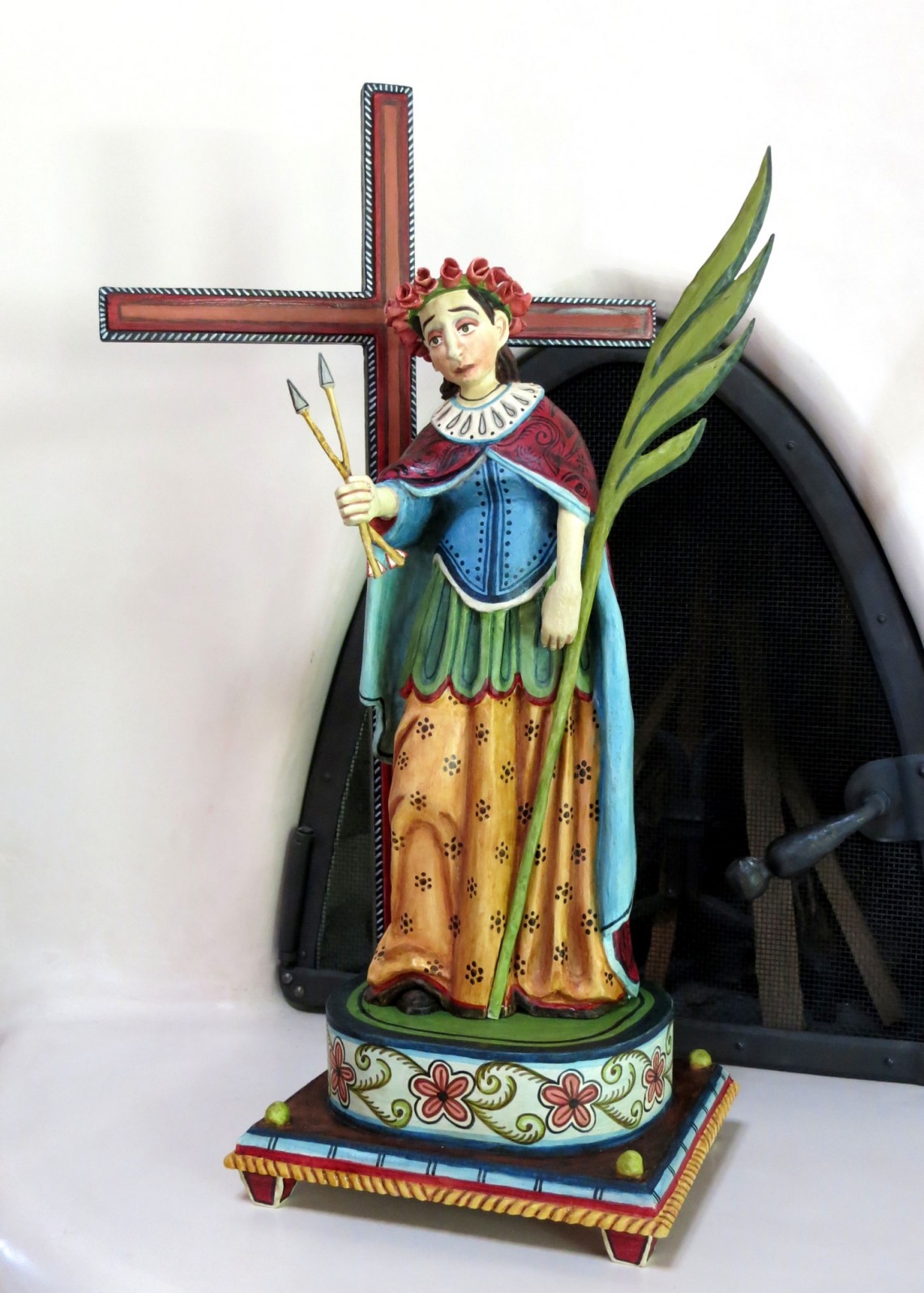
The Red that Colored the World at the Museum of International Folk Art
| May 17, 2015 | |
| May 17 – September 13, 2015 |
The Red that Colored the World exhibition at the Museum of International Folk Art in Santa Fe explores the global history and use in art of American cochineal, the producer of the color red. The exhibition includes James Cordova’s bulto, Santa Cristina de Bolsena, from the Carl & Marilynn Thoma collection.
From the Museum of International Folk Art:
“From Antiquity to today, as symbol and hue, red has risen to the pinnacle of the color spectrum. Throughout art history, a broad red brushstroke has colored the finest art and expressions of daily life. Yet, while most people know red, few know of its most prolific and enduring source: American Cochineal, a tiny scaled insect that produces carminic acid. Fewer still know the story behind its explosive global spread after its first encounter by Spain in 16th century Mexico.
Cochineal can already be demonstrated as a commonly used colorant in painting, sculpture, furniture and textiles from the mid 16th through the mid-19th century, when synthetic pigments were invented. The exhibition is not restricted to folk art and will include manuscripts, paintings, sculpture, textiles and furniture from pre-Columbian and Spanish Colonial Mexico, Peru and New Mexico; European paintings, textiles and clothing; and textiles from Asia, India and the Middle East, along with selections from the collection at the Museum of International Folk Art.”
